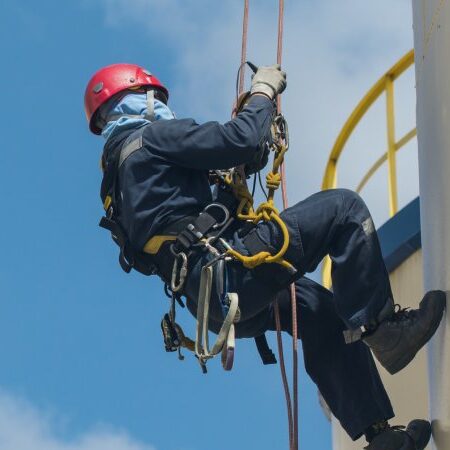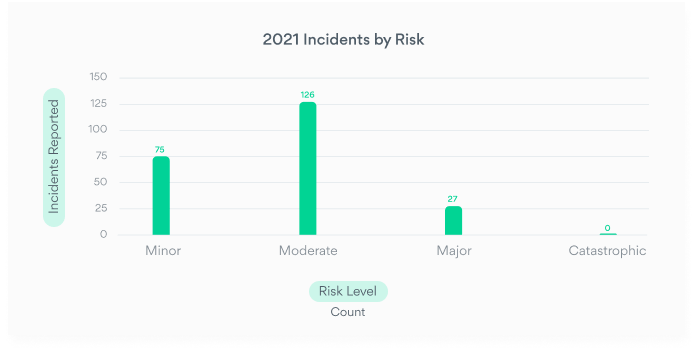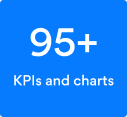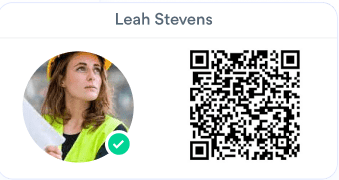Below, our team has outlined the fundamental elements to get value out of your OHS assessment indicators.
Over the years, several companies have relied on health and safety incident reports to assess the performance of their OHS program. However, as a standalone lagging indicator, worksite incidents are an inferior health and safety assessment measure. What’s more, focusing solely on incidents makes this piece of data one of the costliest and life-threatening metrics you can work with to assess and improve your health and safety program.
Safety leaders work with a range of lagging and leading indicators to genuinely improve their OHS management and maintain stellar standards. Indeed, by targeting a set of crucial metrics—i.e. a customized selection of lagging and leading indicators—safety practitioners get access to powerful insights that help prevent workplace incidents from happening in the first place.
1. What are lagging indicators in a health and safety program?

For many companies, lagging indicators are usually the first workplace health and safety statistic they choose to monitor. These indicators are also the ones that most senior managers are comfortable with—and in some cases, they may be the only indicators that an organization uses in its health and safety program.
Lagging indicators can confirm that parts of an OHS program have failed and point toward areas that need improvement. But they’re a reactive, not a preventive data source, and can only be collected and analyzed AFTER a health and safety incident occurs.
Traditionally, lagging indicators are used to identify trends and variance from an OHS program’s goals. Typical lagging indicators include:
- Recordable injuries
- Injury frequency and severity
- Lost-time injury frequency rate
- Days away from work
- Number and types of injuries
- First aid injury frequency rate
Because lagging indicators are reactionary, it’s easy to see why they’re deficient criteria for prevention. Measuring the harm, loss, or damage that has already happened is valuable, but it won’t help improve a company’s health and safety measures.
2. What are leading indicators in a health and safety program?

The short answer is they are preventive indicators. They answer the question: Are we doing what it needs to prevent incidents and manage risk.? Generally, you would want these KPIs to increase or reach a minimum per period.
Leading indicators capture and provide current information about an OHS program’s performance, activities, and processes. They drive health and safety risk management in the workplace, allowing for preventive identification and eliminating risks that could otherwise lead to OHS incidents and injuries.
Common leading indicators include:
- Hazards or risk reported, eliminated or mitigated
- Inspections completed
- Behavioural observations completed
- Corrective actions identified and completed
- OHS training hours reported
- Safety meetings completed
Best practices when monitoring leading indicators include having a clear, snapshot view of indicator status. Hazards, for instance, should be classified according to their status: Mitigated, Present, Eliminated. The takeaway from the graph example, below? Addressing AND reducing the number of following Hazards is a top priority.

Although leading indicators are, by definition, more prevention-focused than lagging indicators, no single leading indicator is appropriate or enough for all health and safety programs. What you need is a mix of indicators that reflects your organization’s specific OHS management reality. Simply put: you need to get value out of them!
Leading indicators are
proactive, preventive and predictive.
3. The critical factors that make for valuable workplace health and safety indicators.
According to The Campbell Institute, a US-based think tank on OHS management, your workplace health and safety indicators provide value when they are:
Actionable
Metrics that have measurable steps
Meaningful
Obtaining information that justifies continued tracking
Valid
Relevant to the organization’s objectives
Useful
Relevant to the organization’s objectives
Achievable
Setting obtainable goals
Transparent
Understandable metrics
Easy
Easy to communicate
Timely
distributing information relevant to the organization
Tips
- NeXafe’s safety experts combined their field experience and studied best practices, including the Campbell Institute’s insight, to create 95+ predefined key performance indicators and charts. Users of the NeXafe platform can customize each KPI or chart to fit their workplace reality in minutes.
- The Campbell Institute also offers a Practical Guide to Leading Indicators: Metrics, Case Studies & Strategies. This document is a reliable source of information to help you select and achieve value from your health and safety management indicators.

OHS assessment data is only helpful if you can record, access and work with it quickly.
4. How to collect and process your OHS assessment data (indicators).

There are countless ways to collect and track OHS assessment data. Paper and spreadsheets? They should be your last resort. Rule of thumb: leading and lagging OHS assessment data is only helpful if you can quickly record, access, and work with it.
Even when data is accurate and rigorously updated—a challenge in itself— if it’s buried in spreadsheets or split across multiple applications, chances are the process of working with it will simply be too cumbersome to be worthwhile. Ideally, tracking workplace health and safety indicators under a single, centralized application will provide you with the consistency needed to collect, organize, correlate, communicate and, ultimately, act on your OHS assessment data.
5. Five steps to make good use of your workplace health and safety indicators.
1. Categorize lagging and leading indicators available to your company.
2. Work with a mix of indicators that align with your reality and help you reach your OHS program’s goals.
3. Ensure these indicators provide value, fine-tuning elements if need be.
4. Create a system or resort to a dedicated solution that allows you to collect and track workplace health and safety data and, ultimately, empowers your team with critical insights.
5. Lastly, manage health and safety hazards and risks before they become incidents!
How our NeXafe platform can help

When using NeXafe, workplace health & safety managers say goodbye to spreadsheets and paperwork, along with the challenge of collating data. Instead, they work with the NeXafe platform’s StellarHSE module to capture, report and follow through on safety risks, hazards and incidents. The information they enter in StellarHSE is automatically converted into indicators, charts and graphs the moment it’s entered.
As a result, they see how their company’s real-time work safety performance measures up to goals, which in return allows them to make better-informed decisions. What’s more: these real-time indicators can be shared with anyone in the company who’s connected to StellarHSE—a significant asset in building a stronger safety culture.
6. Turn your OHS assessment data into a powerful tool for health and safety management.
The practice of resorting to lagging indicators to assess your OHS program’s health and safety measures is outdated. It’s the costliest way to review workplace health and safety and correlates directly with increased downtime, high-priced penalties and more. Worst yet, in some cases, focusing on lagging indicators is like relying on a piece of data no one should be putting a price on!

Managing, assessing and improving your occupational health and safety performance requires a strategic combination of lagging and leading indicators. The OHS assessment data your company collects should count towards improving safety, which not only means reducing incidents but clearly understanding how to reduce workplace health and safety risks in the first place.
What’s more, whether your team chooses to work with NeXafe or another market offering, we can’t stress enough the importance and gains of using a dedicated, centralized OHS management software to monitor indicators, foster engagement and manage your health and safety program. Should you choose NeXafe, know that you’ll benefit from a team of safety experts to accompany you every step of the way!
To book a pressure-free OHS management software demo with one of our team members, answer any questions you might have regarding NeXafe, and help you find value in your OHS assessment data, hit the quick-link button below.
Stay Safe










